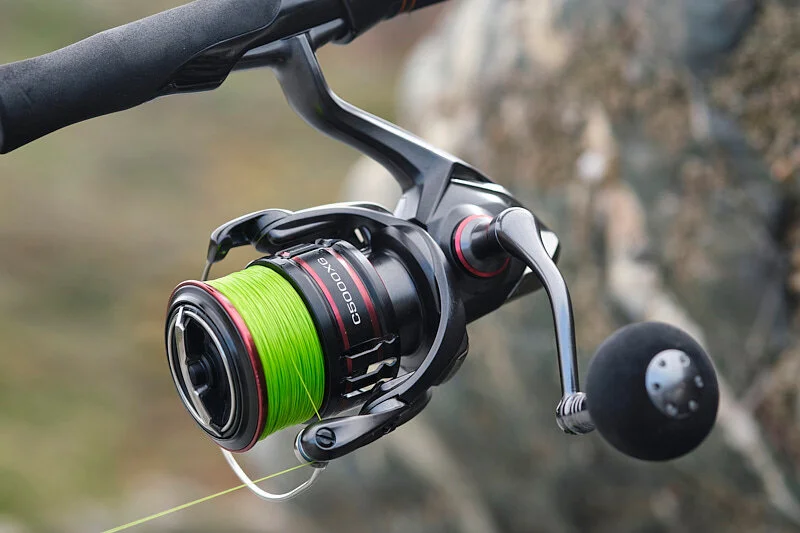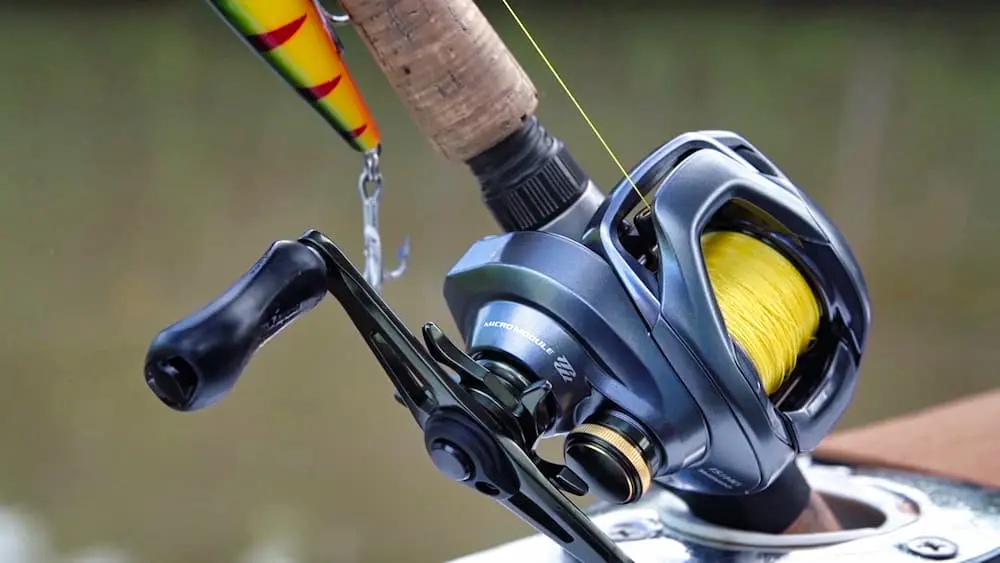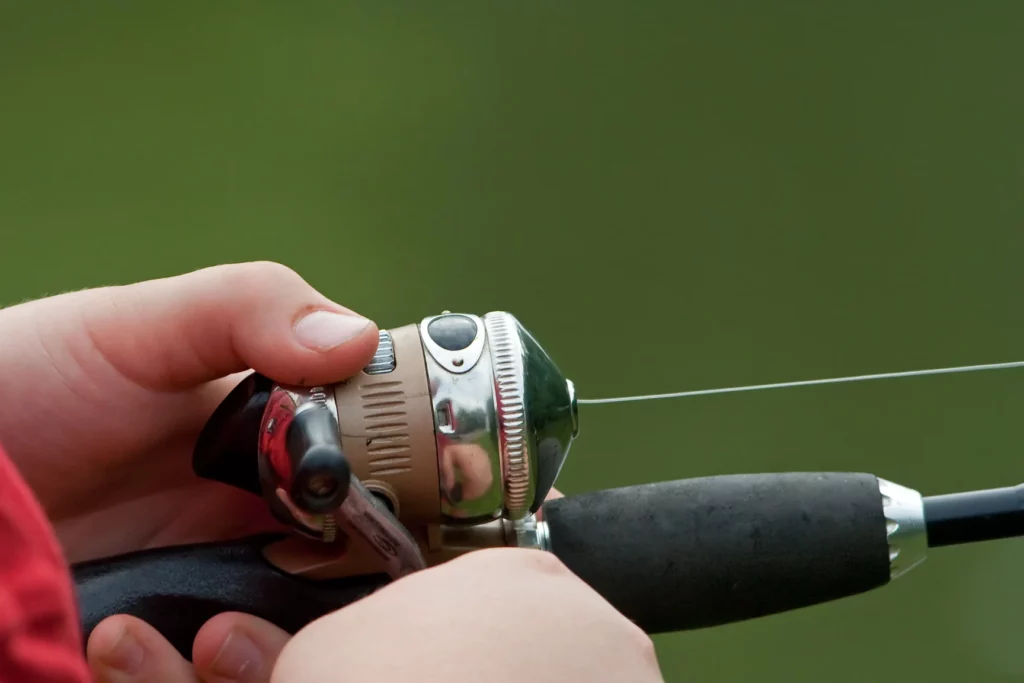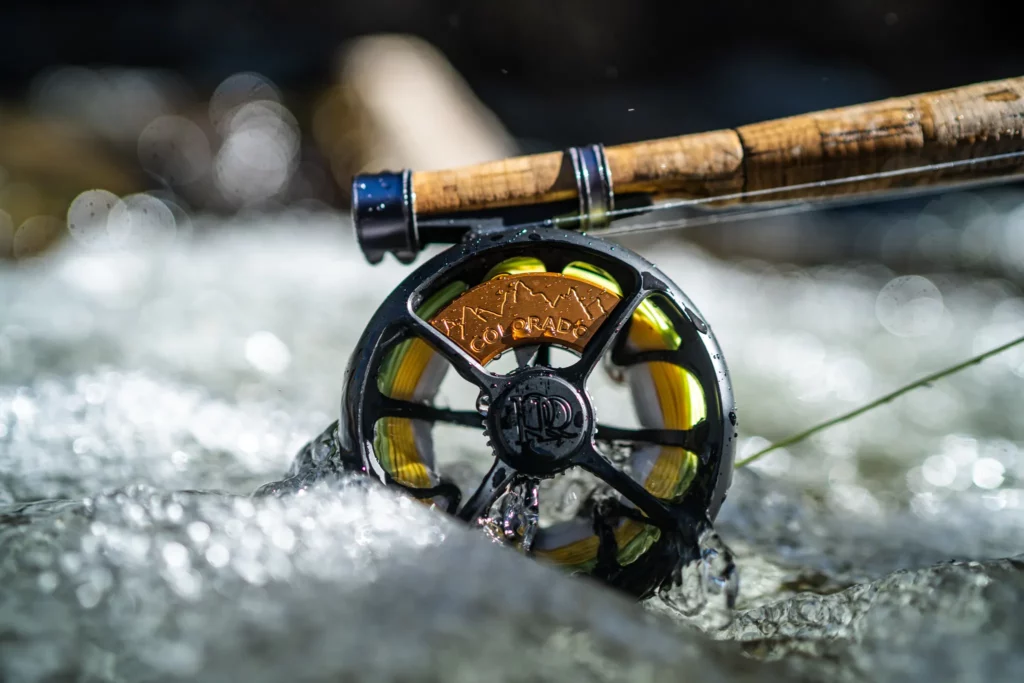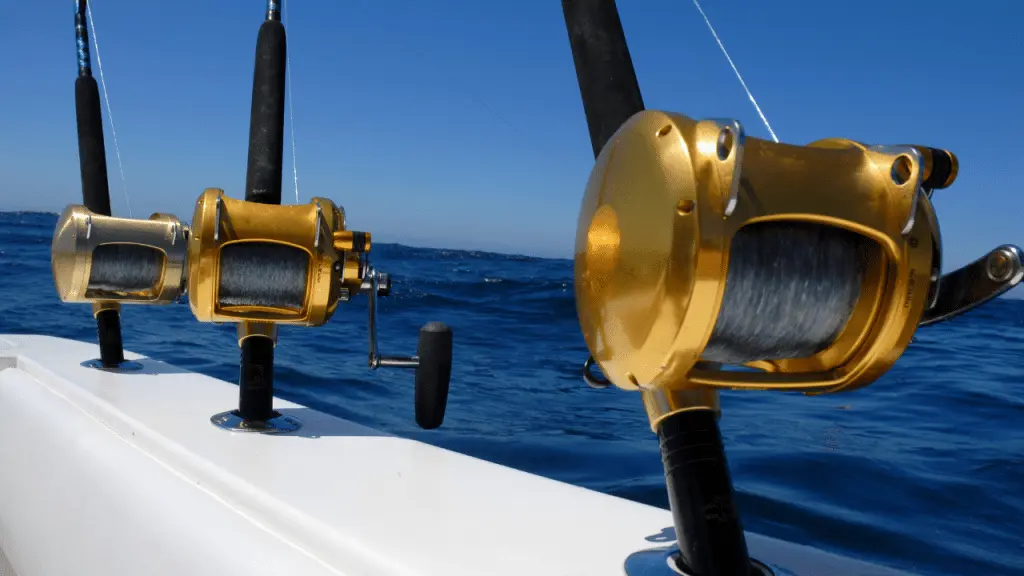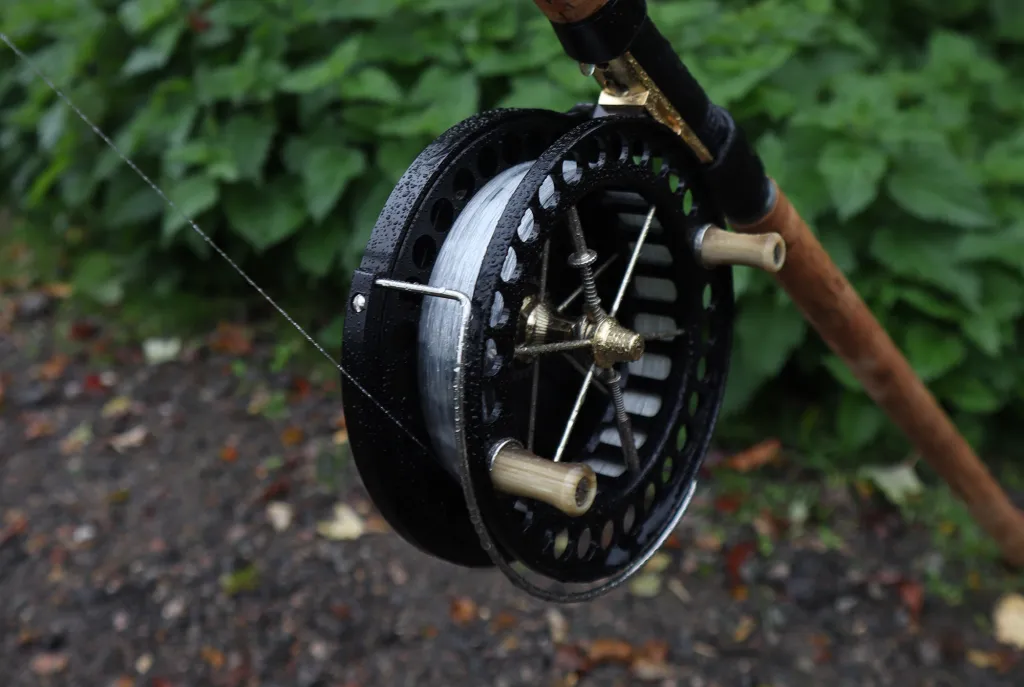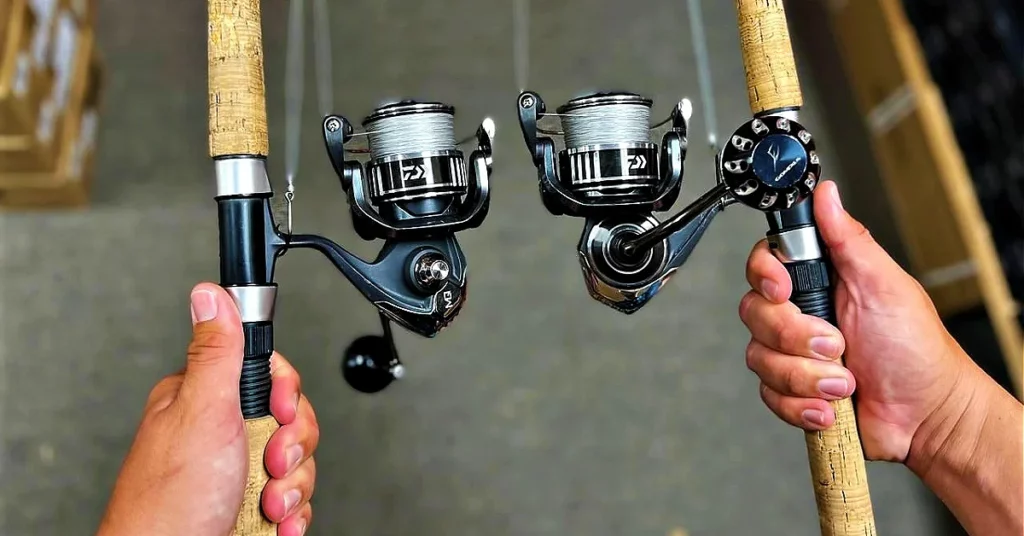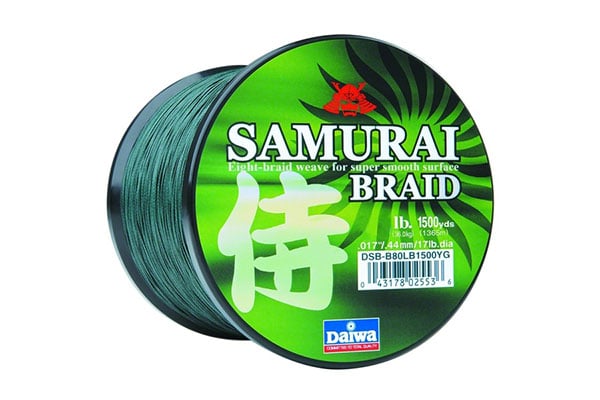To reel a fish out of the sea, you first need to navigate your way through the sea of fishing reels. There are so many of them it sometimes feels like the manufacturers try to confuse you on purpose. But behind every reel design, there is a very specific idea and purpose. Some reels excel at precision, while others can boast superior casting distance. But there is no way you can know this from the very beginning. So we’ve compiled this guide to help you distinguish between various types of fishing reels and determine which one you might need.
Table of Contents
The Basics of a Fishing Reel
Spinning Reels
Baitcasting Reels
Spincasting Reels
Fly Fishing Reels
Trolling Reels
Centrepid Reels
How to Choose Fishing Reels
Conclusion
FAQs
Understanding the Basics of a Fishing Reel
Even though the looks of a fishing reel may change from model to model, its essence and basic working principles remain the same regardless of the type. It’s always a cylindrical device attached to the fishing rod used in winding and unwinding of a fishing line.
A fishing reel serves two main functions: casting the fishing line to the desired distance and reeling it back in once a fish is caught. The beauty of a fishing reel is that it allows for control over the reel’s movement without needing to physically hold it.
When you cast your rod, the fishing reel enables the line to swiftly unspool while keeping enough tension to prevent tangling. When a fish takes the bait, the drag system of the reel generates resistance as the fish attempts to escape, which exhausts the fish without snapping the line. Subsequently, the reel is employed to reel the line back onto the spool, thereby pulling in the fish.
These are the fundamental operations of a reel. However, the design of a reel may vary based on the target fish species and the fishing environment. Here’s a look at the main types of fishing reels available in the market.
Spinning Reels
Spinning reels, often referred to as “open-faced” or “fixed-spool” reels, are a favorite among fishing enthusiasts for their adaptability and user-friendly nature. These reels are attached to the bottom of the fishing rod and are suitable for both freshwater and saltwater fishing scenarios.
Design
The architecture of a spinning reel is quite simple. It includes a stationary spool (the component that holds the line) aligned with the rod. A rotor powered by ball bearings wraps the line onto the spool as the handle rotates. During casting, the line unravels from the spool effortlessly. The drag adjustment, which dictates the resistance a fish encounters when tugging on the line, is typically situated on the spool’s top.
Usage
Spinning reels are apt for various fishing methods, including live bait and lure fishing. Their design allows them to manage light lines and tiny lures, making them perfect for catching smaller fish species. Although there are larger, sturdier spinning reels designed for larger fish, other types may be more appropriate for such tasks.
Advantages
One of the key benefits of spinning reels is their simplicity of operation, making them an excellent choice for novice anglers. They’re also highly versatile and can be employed in multiple fishing conditions with various line types. Additionally, unlike baitcasting reels, spinning reels seldom backlash during casting, meaning the line hardly ever gets tangled.
Baitcasting Reels
Baitcasting reels, also known as baitcasters or overhead reels, are a type of fishing reel that is typically favored by experienced anglers due to their accuracy and power. They can be used in both freshwater and saltwater environments.
Design
The design of a baitcasting reel is quite distinct. The reel is mounted on top of the rod, and it features a rotating spool that sits perpendicular to the rod. Unlike a spinning reel where the spool remains stationary during a cast, the spool on a baitcasting reel rotates as you cast. You can control the speed at which the spool rotates by adjusting the reel’s brake system. This braking system, along with the reel’s drag system (which manages the line tension) is usually manipulated manually.
Usage
Baitcasting reels are often used for heavier lines and lures, making them ideal for blue water fishing or targeting larger fish species in general. They are particularly well-suited for techniques such as flipping and pitching, trolling and other methods that require fine line control and precision casting.
Advantages
One of the main advantages of baitcasting reels is their unparalleled degree of control over casting. You can precisely manage the distance and spot where your lure lands, which can be crucial when targeting fish in cover or specific structures. Baitcasting reels also have a greater line capacity and typically offer more power than spinning reels, making them a better choice for heavy-duty fishing situations.
Spincasting Reels
Spincast reels, also known as “push-button” reels, are mostly known for their simple design and ease of use. If you are introducing someone to fishing or taking it up yourself, these are perfect to begin with.
Design
The design of a spincasting reel is quite straightforward and somewhat outstanding when compared to other reels. The spool is enclosed within a nose cone or cover, and the line is fed out of a small hole in it. The cover precludes the line from tangling and protects the spool from external impact. When you press the button on the back of the reel during a forward cast, the line is released. Once the button is released, the line stops as well.
Usage
Spincast reels are best used for light to medium fishing and are typically paired with lighter lines and smaller lures. Their simple operation makes them great candidates for honing basic casting techniques. They are great for anyone who prefers a more laid-back fishing experience.
Advantages
The main advantage of spincast reels lies in their ease of use. You don’t need to worry about controlling the line with your fingers during a cast, which is a common challenge with spinning and baitcasting reels. If it’s the ease of usage you’re after, you won’t find a better reel.
Fly Fishing Reels
Fly fishing reels stand apart from other varieties as they are typically used exclusively for fly fishing. This style of angling employs artificial flies as lures. These reels come in an array of designs and sizes to accommodate everything from the tiniest freshwater trout to the most massive saltwater game fish.
Design
Compared to other fishing reel types, the architecture of a fly fishing reel is relatively uncomplicated. They are usually constructed with a spool that spins around a fixed spindle. During casting, the angler manually draws the line off the reel, then winds it back onto the spool by rotating a handle.
Fly reels primarily come in two versions: single-action and automatic. Single-action reels feature a direct drive, signifying each rotation of the handle equals one turn of the spool. Conversely, automatic reels employ a spring mechanism to retrieve the line automatically.
Usage
Fly reels are used in both freshwater and saltwater environments. They are designed to hold the fly line and provide a smooth, consistent drag system (resistance put on the line while reeling in fish) to handle the fight of a fish. They can be used for a range of fish species, from trout to salmon to tarpon, depending on the size and design of the reel.
Advantages
It’s a bit unfair to speak about the advantages of a fly fishing reel since you can’t do fly fishing with anything else. Of course, its ability to handle long, delicate fly lines stands out. Such reels also allow for precise control over the line, which is crucial when casting artificial flies.
Trolling Reels
Trolling reels are a type of fishing reel specially designed for trolling, a method of fishing where one or more fishing lines, baited with lures or baitfish, are drawn through the water. They are typically heavier and have a greater line capacity than other types of reels.
Design
Trolling reels come in a range of sizes and styles. They bear a resemblance to baitcasting reels but are typically sturdier and more substantial, prepared to face the challenges of trolling. They often incorporate either a star or lever drag system to regulate the line’s tension.
Some trolling reels exhibit a round structure, while others showcase a low-profile format. The latter is frequently perceived as more ergonomic, positioning the spool lower for a more comfortable grip. The handle design is equally vital, with top models offering comfortable and user-friendly handles that enable prolonged use without inducing fatigue.
Usage
Trolling reels are mainly utilized for deep-sea fishing, aiming at larger species like tuna, marlin, and kingfish. They are engineered to manage heavy lines and can be employed with both monofilament and braided lines. They are also apt for freshwater settings for targeting species like salmon and muskie.
Advantages
Trolling reels take pride in their excellent line capacity, which is essential when dealing with robust fish that tend to make extended runs. They also flaunt potent drag systems capable of handling the pressure exerted by larger species.
Centrepin Reels
Centrepin reels, also known as float reels, are a type of fishing reel that is popular among anglers who partake in coarse fishing.
Design
Centrepin reels’ design is pretty unique yet relatively simple. They feature a large diameter spool that is set on a central pin, hence the name. The spool spins freely around this pin, allowing for incredibly smooth and drag-free drifts.
A distinguishing feature of centrepin reels is the lack of a mechanical drag system or gear ratio. The angler’s hand solely controls the line, providing full command over the line’s speed and direction.
Usage
Centrepin reels are predominantly employed for float fishing in rivers and streams. They are particularly favored for steelhead and salmon fishing but can also be utilized for other species like trout. The reel’s free-spinning design facilitates long, smooth casts and precise drift management.
Advantages
The primary benefit of centrepin reels is the control level they grant to the angler. With no drag or gear system to meddle, the angler has unrestricted control over the line. This can lead to longer, smoother casts, and more natural drifts. Moreover, the design’s simplicity translates to fewer parts that can break or malfunction, making centrepin reels remarkably durable and reliable.
How to Select the Right Fishing Reel for Your Angling Needs
Choosing the appropriate fishing reel is one of the mainstays of a successful fishing trip. Your choice of reel should be reasoned by a number of factors such as the fish species you are targeting, the environment you are planning to fish in, your skill level, and, finally, personal preference. Here’s a summary that will help you distinguish between the various reel types and their specific applications:
Spinning Reels
Spinning reels are amongst the most widely used types of fishing reels, recognized for their user-friendly design and adaptability. Perfect for novices, spinning reels are excellent for light lures and baits. They’re also suitable for casting over long distances and work well in a variety of fishing scenarios.
Baitcasting Reels
Baitcasting reels require more proficiency and are considered advanced options. They provide greater accuracy and control compared to spinning reels, which makes them a favorite of seasoned anglers. These reels are ideal for larger lures and heavier lines, typically used for sizable freshwater fish like bass, pike, and catfish.
Spincasting Reels
Spincasting reels are another beginner-friendly alternative. They’re akin to spinning reels but feature a closed face, with all the crucial parts contained inside a nose cone. While they don’t cast as far as spinning or baitcasting reels, they’re straightforward to use and seldom tangle.
Fly Fishing Reels
Fly fishing reels are dedicated pieces of equipment for fly fishing. They’re generally simple, with minimal mechanical parts, and depend on the fishing line’s weight for casting rather than the lure’s weight. They are principally used for freshwater fishing, especially for species like trout and salmon.
Trolling Reels
Trolling reels are robust reels designed for capturing large saltwater game fish. They are typically used for trolling.
Centrepin Reels
These reels are often used for river fishing, particularly for species like salmon and steelhead. They are also often used for coarse fishing, which is angling for fish usually considered undesirable as food or game.
Conclusion
As you can see, there are plenty of types of fishing reels to choose from. Not all of them perform equally well in similar conditions, so it would be most beneficial if you learned their differences. Armed with this knowledge, you will be able to pick the reel that suits your particular need instead of using one regardless of the type of fishing you are planning to do. And Gritr Outdoors has more than plenty of reels to choose from.
Check out our other articles on fishing:
- How to Care of Your Fishing Rod & Reel
- Most Common Types of Fishing Techniques
- How to Select the Right Fishing Rod Length
- How to Choose the Best Ultralight Fishing Rods
- Fly Fishing Etiquette: Do’s and Don’ts on the Water
FAQs
What are the main types of fishing reels?
The primary types of fishing reels are spinning, baitcasting, spincasting, fly fishing, trolling and centrepin reel, each designed for a particular fishing scenario.
What is the best fishing reel for a beginner?
If you are on;y at the beginning of your fishing path, spinning and spincasting reels will make for the best companions. They are easy to use and don’t require much finesse to operate.
What is the best type of fishing reel for blue water fishing?
If you are after a bigger fish, you might want to take a look at baitcasting or trolling reels. Those are the types most commonly used for fishing out in the open sea or when catching bigger species in general.

